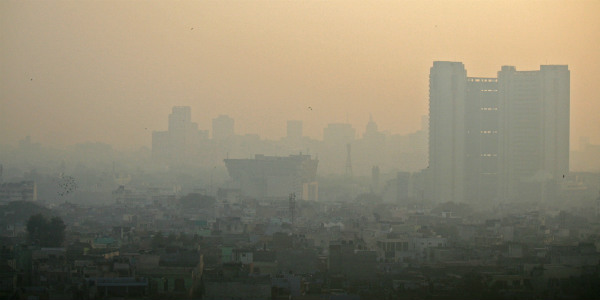
As the winter season starts to commence over the northwestern plains of India including the capital city, Delhi, pollution levels start to rise.
The main reasons responsible for these increased pollution levels in the atmosphere are as follows:
-Night temperatures decrease, winds become light and frequency of Western Disturbances increases leading to increase in humidity levels.
Thus, we can say that, due to low temperatures and high humidity levels, formation of haze and mist take place during the morning hours.
The dust and smoke particle along with other pollutants gets deposited on the water vapor present in the haze/mist and forms a layer of smog in the atmosphere. In the absence of strong winds, this layer remains suspended near the earth surface.
Delhi is the most pollution affected city in India, in fact, one of the worst in the world. Being a metro city, smoke from lakhs of vehicles and dust from hundreds of construction sites adds to the pollution in the air.
Moreover, during the month of October and November, stubble burning also takes place in Punjab and Haryana. Therefore, the prevailing winds from northwest and the smoke of stubble burning reaches Delhi, making the capital city extremely polluted.
This layer of smog remains, and these pollutants keep on lingering in lower atmosphere near the earth surface. The only remedy to ease the pollution is rain or strong northwesterly winds.
But looking at the current scenario, rains are not possible for at least next one week. In fact, due to the successive Western Disturbances we do not expect strong northwesterly also anytime soon. Thus, pollution levels will remain on the poor side and may become severe soon.
Image Credit: Delhi Times
Please Note: Any information picked from here must be attributed to skymetweather.com


